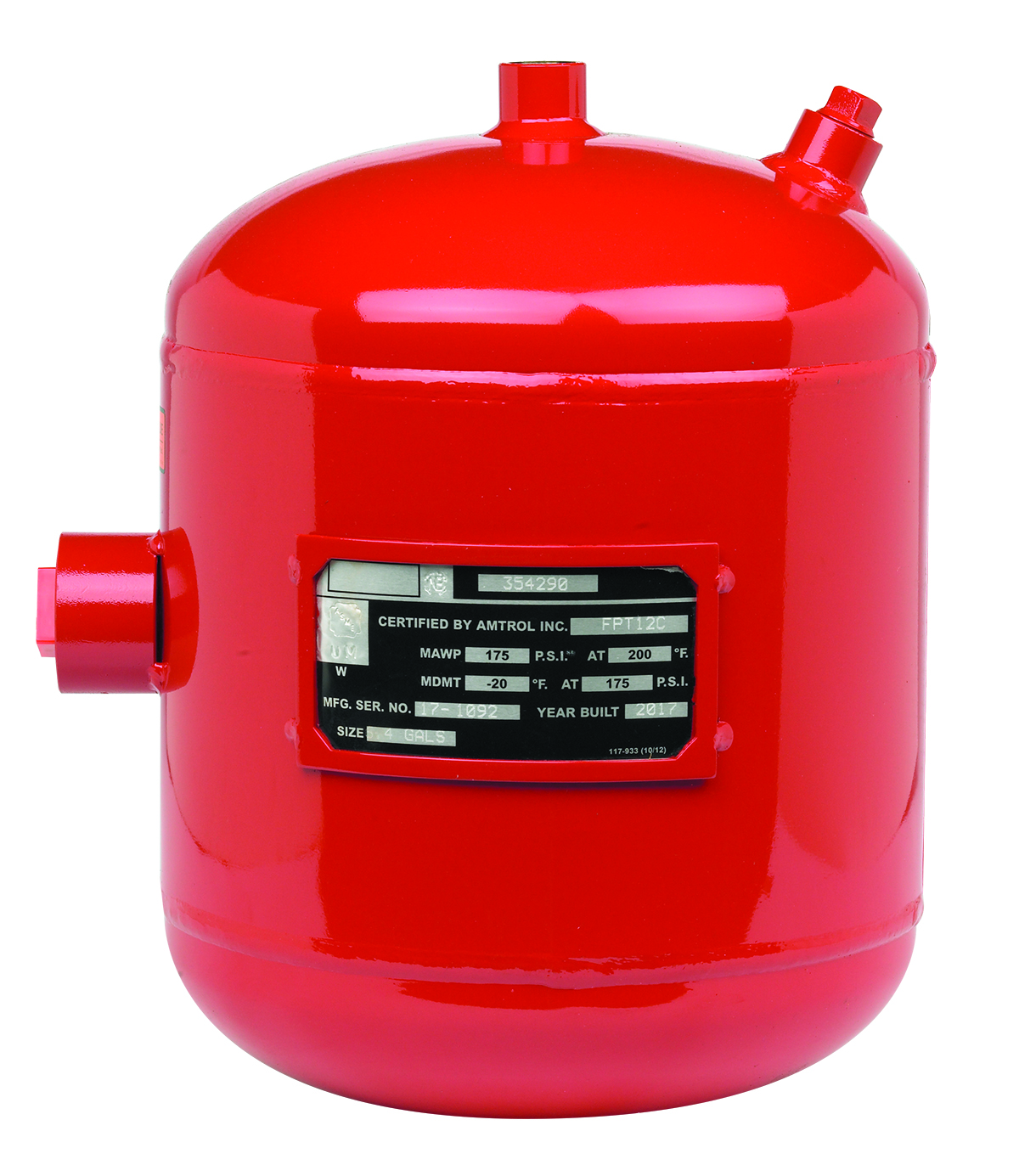
By: Sean Pearce on October 7th, 2021
WHY EXPANSION TANKS HELP YOU MAINTAIN YOUR LISTED ANTIFREEZE
A UL-listed, factory-premixed antifreeze – like freezemaster™ antifreeze – will soon be the new normal for sprinkler systems needing seasonal freeze protection. This new normal requires different installation and maintenance than building owners and ITM contractors are used to with traditional antifreezes. Not taking these differences into account significantly shortens the life of listed antifreeze.
ANTIFREEZE EXPANSION COMPLIANCE CONSIDERATIONS
Like any fluid, antifreeze expands and contracts when exposed to changes in temperatures, resulting in changes in fluid density. The expanded volume of system fluids due to daily and seasonal ambient temperature fluctuations can stress piping and can cause valves or sprinkler heads to leak (sometimes called “head sweats”), or fail due to over-pressurization, this can cause the antifreeze loop to pull water from the back-flow preventer, diluting the antifreeze.
In sprinkler systems that used unlisted antifreeze, Inspection technicians would often top off any antifreeze that had bled off due to expansion and contraction. However, this practice contributed to the improper antifreeze mixes that worsened several high-profile fires. This is why listed antifreezes can’t be topped off. Listed antifreeze is designed to perform in a fire as it was tested by UL. If a listed antifreeze like freezemaster™ antifreeze is diluted, the refractive index will change, and the antifreeze is no longer UL-listed.
When this happens, Inspection Technicians must completely drain the sprinkler system and refill it with listed antifreeze. An hour-long annual inspection to confirm compliance can become a three-hour long undertaking, along with the associated costs to replace the listed antifreeze, when expansion isn’t accounted for in a system.
Correct maintenance of listed antifreeze will keep it in compliance for longer. Lubrizol strongly recommends retrofitting sprinkler systems with an expansion tank or a reclamation tank. This is the only effective way to manage the fluid expansion-related maintenance of a listed antifreeze like freezemaster™ antifreeze.
BEST PRACTICE: ADD AN EXPANSION OR RECLAMATION TANK
Whether you choose an expansion tank or a reclamation tank, fluid expansion can be managed by the system design. This is a far superior approach to allowing the system to leak or vent antifreeze, draw in fresh water, and dilute the listed material – causing the antifreeze to fall out of specification and compromising the UL listing.
An expansion tank (sometimes referred to as a bladder tank) is a pressure vessel that uses a bladder inside a cast-iron bulb with an air valve on top. Based on pressure, the bladder takes in and expels listed antifreeze, instead of allowing it into the sprinkler system or to leak. Currently, NFPA does require expansion tanks to be listed.
A reclamation tank is a poly tank with a pressure switch and a pump. The pressure switch turns the pump off at a specific pressure. When the system contracts, it will push antifreeze back into the system, and the tank will take up the antifreeze as it comes out of a relief valve. Reclamation tanks are often more affordable for larger systems, though NFPA requires the pump and pressure switch to be UL-listed.
Building owners should collaborate with their inspection contractors to select the appropriate vessel size based on anticipated operating conditions and associated expansion values detailed in the listed antifreeze installation guide. The cost of an expansion or reclamation tank retrofit quickly pays for itself – just two or three out-of-compliance, drain-and-refill inspections will cost more than the tank.
Bottom line: An expansion or reclamation tank is an essential retrofit for the maintenance of listed antifreeze in sprinkler systems requiring seasonal freeze protection.
For additional compliance and installation details for freezemaster™ antifreeze, including values and NFPA 13, 13R, and 13D Standards for determining proper expansion chamber size and refractive indexes, download the Installation Guide.



